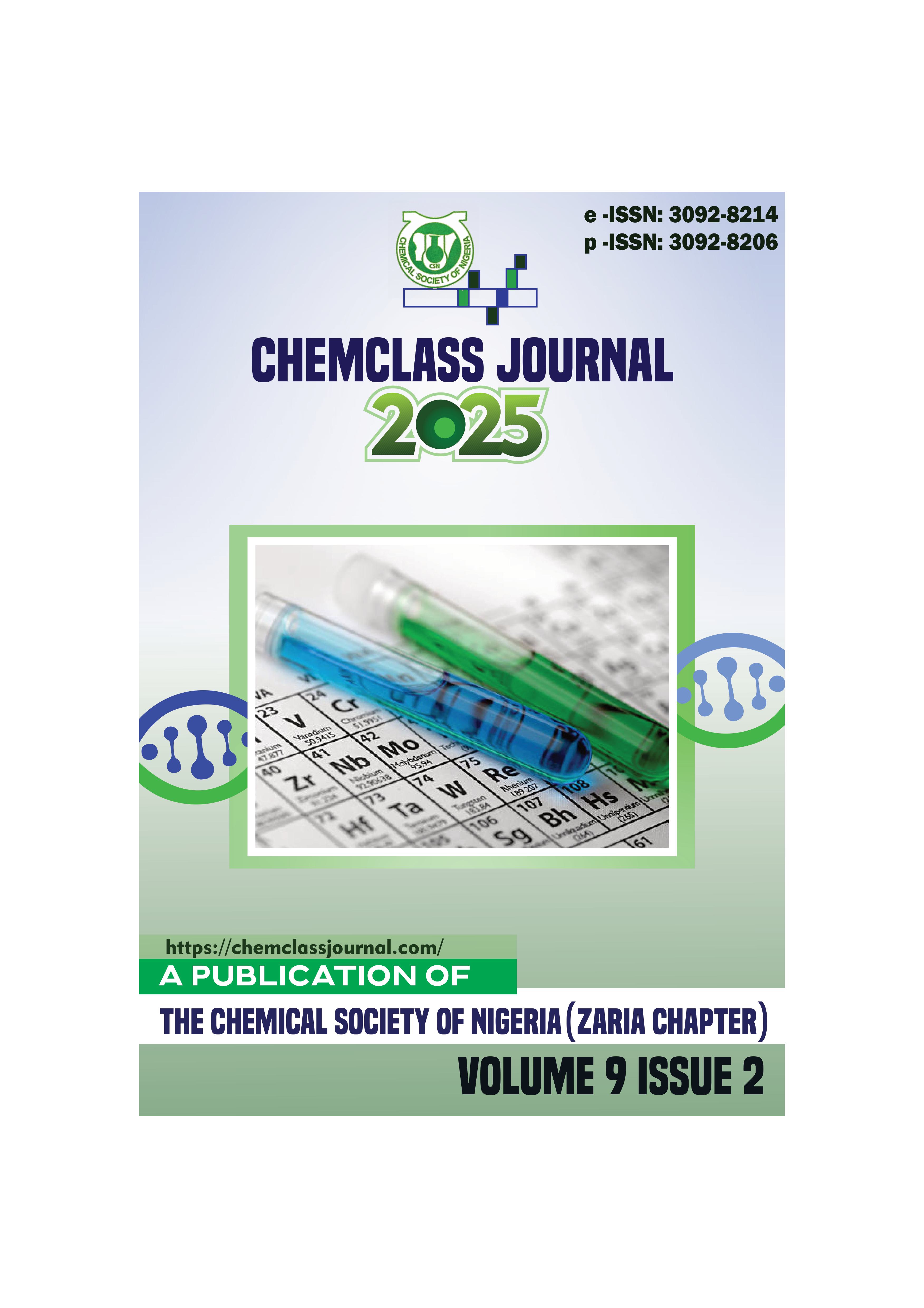Detoxification of Cr (VI), Mn (II) and Pb (II) Ions from Mining Wastewater by Sorption onto Chemically Modified Agricultural Wastes
DOI:
https://doi.org/10.33003/chemclas-2025-0902/166Keywords:
Detoxification , adsorption , ions, Kinetics, Diffusion, Wastewater, SeedshellsAbstract
The removal of Cr (VI), Mn (II) and Pb (II) ions from mining wastewater onto activated carbon prepared
from the seed shells of Vitellaria paradoxa (VPA) and Mangifera indica (MIA) was studied using the batch
adsorption method at 20, 40, 60, 80 and 100 minutes and 250 rpm. The influence of contact time was used
to determine experimental, qe(exp) and theoretical, qe(cal) values. Four adsorption kinetic models: pseudo
first-order, pseudo second-order, Natarajan-Khalaf first order and Bhattacharya-Venkobachar first order
were tested. The values of correlation coefficient, R2 and rate constant, k for the pseudo second order
kinetics for the adsorption of Cr (VI) were 0.9847 (VPA) and 0.3632 (VPA) respectively, and were higher
than R2 and k values obtained for pseudo first order (0.9770 and 0.0212), Natarjan and Khalaf first order
(0.9713 and 0.0083), and Bhattacharya and Venkobachan kinetics (0.8558 and 0.0205). The sum of square
of error calculated to compare the fitness of the adsorption kinetics indicated that the adsorption of Cr (VI)
followed the pseudo second order kinetics. Similar trend was observed for R2 and k values for the adsorption
of Mn (II) and Pb (II) form mining wastewater. McKay and Poots intraparticle and Weber and Morris
intraparticle diffusion were also tested. Correlation coefficient (R2) values obtained for the diffusion of Cr
(VI), Mn (II) and Pb (II) using the McKay - Poots model were 0.9993, 0.9417 and 0.9029 respectively.
Values obtained for McKay - Poots intraparticle rate constant, kid (mg.g-1min-1) 0.0037, 0.0239 and
0.0016 for VPA. Lower kid values (0.0037, 0.0237 and 0.0016) were obtained for the adsorption of the
metal ions onto VPA. Weber and Morris intraparticle rate constant, k1 (mg/gmin1/2) for the adsorption of
Cr (VI), Mn (II) and Pb (II) onto VPA were 0.0174, 0.0552 and 0.0096 respectively. Correlation coefficient
(R2) values were in the order: 0.9866 > 0.9439 > 0.9175 for adsorption onto VPA. Results obtained from
this study indicate that the adsorption of Cr (VI), Mn (II) and Pb (II) onto the adsorbent follows the pseudo
second order adsorption kinetic and intraparticle diffusion is predominantly the McKay - Poots model.
Correlation coefficient of the experimental values indicate good performance of the models. These models
can be employed to monitor the removal of heavy metal pollutants from industrial effluent.





 ChemClass Journal
ChemClass Journal
